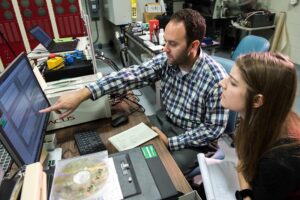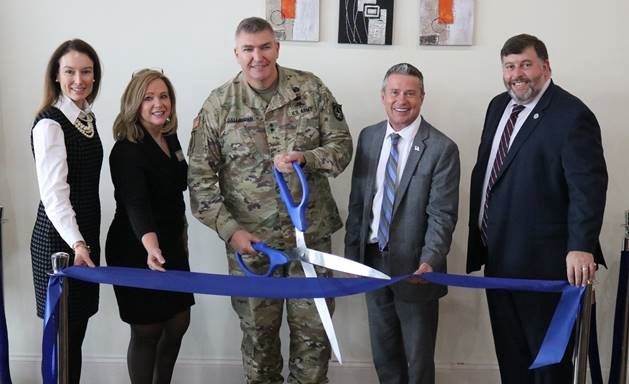<< Back to Media
U.S. Army to Entrepreneurs: Bring Us Your Best Ideas
February 24, 2020
U.S. Army to Entrepreneurs: Bring Us Your Best Ideas
The U.S. government is increasingly looking to the private sector for expert assistance. A few large departments, such as the U.S. Department of Agriculture (USDA), have successfully collaborated with the private sector for decades. The USDA Rural Development Agency, for example, relies on strong public-private partnerships to improve the economy and quality of life throughout American farming communities.
But a more deliberate turn to the private sector is underway in unexpected departments and agencies. The U.S. Agency for International Development (USAID) launched a new Private Sector Engagement Policy in December 2018 that is transforming how U.S. foreign assistance operates. The Agency now prioritizes collaboration with the private sector, seeking industry expertise, entrepreneurial skills, cutting-edge research, and innovation to achieve greater development and humanitarian outcomes.
And while the U.S. Department of Defense (DoD) has long partnered with select, large corporations (think Boeing, Lockheed Martin, General Dynamics, and more recently tech industry giants such as Microsoft) to maximize its military readiness and effectiveness, it’s been difficult for small companies to get a seat at the military-industrial table. Until now.
The U.S. Army stood up Army Futures Command in July 2018 to modernize its systems and capabilities. Now fully operational, it established the Network Cross-Functional Team (Network CFT), one of eight Cross-Functional Teams created by the Army in its biggest reorganization to modernize its force since 1973. The Network CFT will seek the most innovative, timely, and cost-effective means to build and maintain the world’s most powerful military.
“The Army — through Army Futures Command — is reorganizing itself to modernize its systems and capabilities faster. The private sector is a critical partner to helping the Army implement commercial solutions to warfighter challenges,” said Colonel Robert Ryan, Deputy Director, Network Cross-Functional Team, Army Futures Command.
“The Network CFT wants to strengthen collaboration with academia and small businesses to solve some of the service’s tactical network problems and capitalize on the entrepreneurship and innovation small businesses bring,” he told Washington Business Dynamics.
A New Way to Do Business
Rapidly emerging technological advances require the Army and DoD to change and “speed up the process” of doing business to maintain their advantage, Colonel Ryan explained. To that end, in December 2019 the Army partnered with the Harford County Office of Economic Development in Havre de Grace, Maryland to open up a new office to advance private sector engagement.

Army researcher Dr. Robert Haynes reviews experimental data with University of Michigan doctoral candidate Brittany Essink at the U.S. Army Research Laboratory at Aberdeen Proving Ground, Maryland. Sept. 25, 2018.
Why Maryland? The new Network CFT office is located just a mile and a half outside the gates of Aberdeen Proving Grounds — the epicenter of where the latest and most advanced military technology is developed, tested, evaluated and, if proven worthy, ultimately processed into the Army Acquisition System.
“The Army is looking to continue and expand its engagements with industry — both those ‘traditional’ defense contractors as well as ‘non-traditional’ vendors, small businesses, and start-ups. Opening an office just outside the gates of Aberdeen Proving Ground, provides easier access to our industry partners to conduct meetings with us,” said Colonel Ryan.
It also makes it a bit less daunting for start-ups and small businesses to approach a behemoth like the Army or the Department of Defense with their innovations. To bridge the divide, the Network CFT office in Harford County will host Shark Tank-like events for small and medium-sized businesses to bring their ideas to the Army.
“Historically, there’s always been a strong partnership between the Harford County community and Aberdeen Proving Grounds,” said Karen Holt, the Harford County Federal Installation Administrator. The Army research and testing facility for military weapons and equipment opened in 1917 and supports teams of civilian engineers and scientists. Holt says it makes sense for Harford County to host the new Army office for private sector engagement because of the “strong support for the military” in the area. According to Holt, unlike most military installations, 94 percent of Aberdeen Proving Ground personnel are civilians living in Harford County.
A Critical Partner
Besides the new Network CFT office at Aberdeen Proving Grounds, the Army Futures Command and the Network CFT established an Army Applications Lab in Austin, Texas, where America’s top innovators present their ideas. Network CFT also regularly hosts Technical Exchange Meetings. They also administer the DoD Rapid Innovation Fund, a means for small businesses to present innovative technologies for the DoD to quickly funnel through its acquisition system if they meet a specific defense need.
One defense need is cyber security. In fact, partnerships with the private sector are so critical to cyber defense that in the 2018 Department of Defense Cyber Strategy, building trusted private sector partnerships was noted as key to assuring U.S. military advantages. That’s because the private sector owns and operates most U.S. infrastructure and competes head-on with other nations for cyberspace dominance.
“The private sector is a critical partner to helping the Army implement commercial solutions to warfighter challenges,” said Colonel Ryan.

Opening of Office of Private Sector Engagement in Harford County, MD. Pictured from left: Lisa Swoboda, Director, Office of Military Affairs, MD Department of Commerce; Karen Holt, Harford County Federal Installation Administrator; MG Peter Gallagher, Director, Network-CFT; Barry Glassman, Harford County Executive; and Len Parrish, Director, Harford Office of Community & Economic Development. Courtesy of APG News. December 2019.
